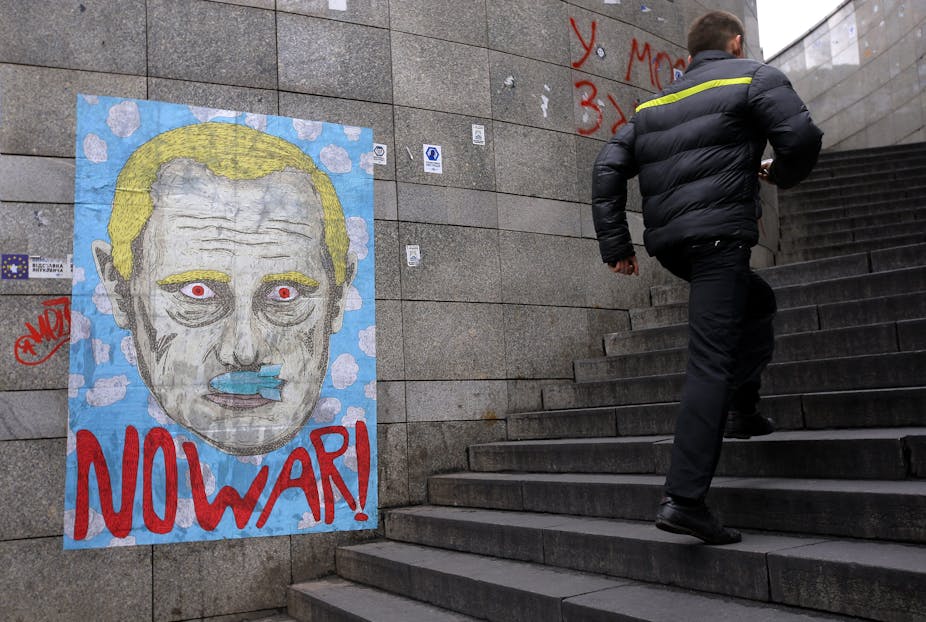World War Two didn’t end in Ukraine in 1945. After the devastation of German occupation, which left the country in ruins and millions dead, Ukrainian nationalists continued to murder thousands of Jews, Poles, Russians and, mostly, Ukrainians. They were murdered less because of what they had done and more because of who they were, or who the nationalists thought they were – traitors or racial enemies who must have been Bolsheviks anyway. The response of the Soviet state and its supporters seeking to re-establish control over Ukraine was no less brutal.
The counterinsurgency raged until the early 1950s, redoubling the violence and leaving thousands more dead or imprisoned. This war burnt another scar in the memory of its victims, alongside collectivisation, famine, the purges, German occupation and myriad other historic wounds.
More than the others, though, this war could not be discussed publicly with any historical accuracy. Thus it was supposed to be “forgotten” in its remembrance. One can be forgiven for thinking that this attempt had been successful, given the western media’s largely ahistorical reporting of the current crisis in Crimea.
Spreading the nationalist virus
Ukrainians, Russians, Jews and Poles haven’t forgotten this war. Since the Soviet Union collapsed in 1991, the remnants of Ukraine’s nationalist groups have sought to boost their political power. They have misrepresented this history to sow further divisions between ethnic Russians and Ukrainians living in Ukraine.
The nationalists have had only limited success, even during Ukraine’s previous pro-European, anti-Russian Orange Revolution in 2004. That revolution too promised greater Western integration and a new, less corrupt political class.
With a decade passed and none of these promises realised, the real danger in this revolution may not just be that the nationalists will become a powerful force. Their marginal and divisive understanding of Russian-Ukrainian history and contemporary identity threatens to infect the mainstream.
That would mean more and more people accept that Ukrainian nationalists were all heroes who did nothing other than defend the motherland from the Russians in the war. They would accept the definition of “Ukrainians” as ethnically pure (not Russian) speakers of Ukrainian (not Russian). What happens then to the millions of Ukrainians who don’t fit this mould?
With Russia annexing Crimea and the interim government in Kiev attempting to match Russia’s nationalist propaganda war to dehumanise its enemies, the pieces are in place for this infection to go viral. If it does, the Kremlin’s line about invading Crimea to protect the lives of ethnic Russians in eastern Ukraine begins to sound convincing. The Kremlin might just be able to help create the reality of its propaganda.
Rhetoric takes an ominous turn

For the sake of my Ukrainian friends and this incredible country where pluralistic national and ethnic identities abound, I hope none of this happens. But I couldn’t have been the only historian of these “bloodlands” whose ears pricked up when Ukraine’s interim prime minister Arseniy Yatseniuk, an avowed democrat, promised to hunt down pro-Russian politicians (traitors) who backed the Crimean referendum on joining Russia. He said:
The ground will burn under their feet.
Coming from overly dramatic Ukrainian politicians who are well versed in the ridiculous soap opera that is Ukrainian politics, these are probably empty threats. But maybe not.
The language of civil war is beginning to take root. Once it does, moderate Ukrainian politicians will no longer be heard. We know of other times when “traitors” were threatened during the mobilisation of civil militias to defend the motherland from the Soviets/Russians.
In the insurgency against the Soviets, this usually meant that nationalist forces killed Russian speakers, Jews and Poles by default. But they also killed poor west Ukrainian farmers – their supposed ethnic brethren. From 1944 onward most of these “traitors to the nationalist cause” gave up their grain to the gun-wielding Soviet requisitioning teams instead of the gun-wielding Ukrainian ones, or submitted to the Red Army’s threats to join them instead of the nationalists.
Either way, the farmers or, in their absence, their wives and children, ended up drowned below the ice of frozen rivers or were left hanging above them by their feet after being tortured to death. No burnt ground in either case, just burning memories.

